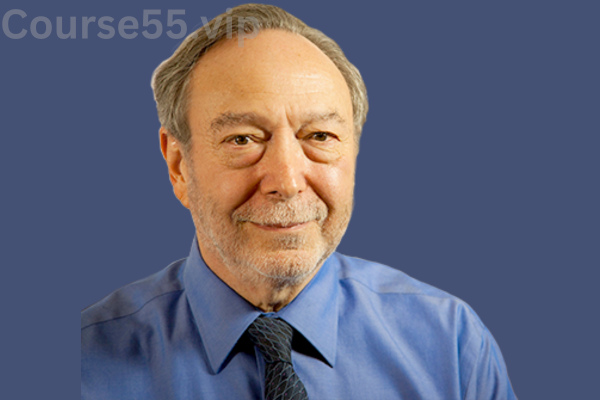Why the Vagal System Holds the Key to the Treatment of Trauma By Stephen Porges – NICABM
$197.00 Original price was: $197.00.$23.10Current price is: $23.10.
The Vagal System: A Key to Understanding and Treating Trauma – Digital Download!
Why the Vagal System Holds the Key to the Treatment of Trauma By Stephen Porges – NICABM
Overview

The Vagal System: Unlocking Trauma Recovery and Treatment
In the field of psychology and trauma therapy, Stephen Porges has gained recognition for his revolutionary work on polyvagal theory. His research highlights the crucial role of the vagal system in both understanding trauma reactions and developing effective therapeutic strategies. The vagus nerve, a key component of the autonomic nervous system (ANS), is deeply involved in regulating emotional and physiological states, particularly in trauma-related contexts. By exploring Porges’s findings, we gain deeper insight into how the vagal pathways shape trauma recovery and why they are central to emotional balance.
Decoding the Vagal System
At the heart of Porges’s theory is the function of the vagus nerve, which consists of two primary branches: the ventral vagus and the dorsal vagus. Each branch governs distinct emotional and physiological responses. The ventral vagus is linked to social connection, emotional regulation, and feelings of security, allowing individuals to engage positively with others and maintain emotional stability. In contrast, the dorsal vagus is activated during overwhelming stress or perceived danger, triggering states of shutdown or dissociation as a built-in survival mechanism.
• Ventral Vagus Pathway:
-
Encourages social bonding and positive emotional states.
-
Enhances feelings of security and emotional stability.
-
Supports resilience and emotional adaptability.
• Dorsal Vagus Pathway:
-
Engages in response to severe stress or danger.
-
Causes immobilization and emotional detachment.
-
Functions as a protective response during extreme distress.
Porges highlights the necessity of maintaining equilibrium between these two pathways for optimal emotional well-being. When trauma occurs, the autonomic nervous system often defaults to a protective mode, hindering both social interactions and the ability to fully process traumatic experiences. Understanding these mechanisms sheds light on why trauma survivors frequently experience emotional dysregulation and withdrawal.
How Trauma Disrupts the Vagal System
Trauma significantly impacts the vagal system, disrupting the autonomic nervous system’s balance. A traumatic event can cause an individual to become trapped in a heightened state of anxiety (hyperarousal) or emotional numbness (hypoarousal), leading to difficulties in emotional processing and interpersonal relationships. This dysregulation can manifest in various ways, including:
• Increased activity in the sympathetic nervous system, leading to panic, heightened anxiety, and persistent stress responses.
• Challenges in forming meaningful connections due to a fear of vulnerability and emotional exposure.
• A profound sense of helplessness associated with the dorsal vagus’s shutdown response.
Recognizing how trauma alters vagal functioning is crucial for mental health professionals. A deeper understanding of these processes enables clinicians to tailor interventions that not only address the symptoms of trauma but also help restore balance within the autonomic nervous system.
Interventions that activate the ventral vagus are particularly effective, as they promote emotional security and relational engagement. For example, therapeutic techniques that incorporate attuned communication—where a therapist matches their vocal tone and body language to the client’s emotional state—can foster safety, facilitating a smoother recovery process.
Therapeutic Strategies: Leveraging the Vagal System for Healing
Stephen Porges’s insights have paved the way for new therapeutic approaches that focus on engaging the ventral vagus nerve to facilitate emotional recovery. By implementing strategies that stimulate this system, therapists can help clients transition from defensive states to feelings of security and connection. Below are some effective methods used in therapy:
• Mindfulness Techniques – Encourage clients to practice mindfulness and breathwork, which help increase bodily awareness and stimulate the ventral vagus nerve.
• Social Connection Exercises – Promote social engagement activities, such as group therapy, expressive arts therapy, or community interactions, which create a safe space for emotional expression.
• Somatic Therapy – Incorporate body-based interventions that help individuals reconnect with physical sensations and process trauma at a physiological level.
• Compassion-Centered Approaches – Use compassion-driven techniques that encourage both self-kindness and empathetic connections, which can activate the ventral vagal pathway.
• Synchronizing Speech and Nonverbal Cues – In therapy, modulating vocal tone and using calming body language can establish a sense of trust and safety, essential for emotional healing.
By employing these techniques, therapists can reduce trauma symptoms, encourage emotional regulation, and foster resilience. These approaches take advantage of the vagus nerve’s natural functions, utilizing the body’s built-in mechanisms to support the healing process.
The Role of Afferent Fibers in Emotional Recovery
A fascinating discovery from Porges’s research is that nearly 80% of the vagus nerve consists of afferent fibers, meaning they transmit sensory information from the body to the brain. This sensory feedback loop plays a vital role in emotion processing and trauma integration by allowing individuals to link physical sensations to their emotional experiences.
By guiding trauma survivors to recognize and verbalize their bodily sensations, therapists can assist them in reconstructing fragmented trauma narratives. This process is essential for long-term healing, as it helps bridge the gap between emotional distress and physical awareness. Therapists who understand the importance of this feedback mechanism can design interventions that align with the body’s natural recovery pathways, leading to more effective therapeutic outcomes.
Conclusion: Rethinking Trauma Therapy Through the Vagal Lens
Stephen Porges’s polyvagal theory provides an innovative perspective on trauma recovery, illustrating that the vagal system plays an active role in emotional healing rather than being a passive bystander. By recognizing how the vagus nerve influences trauma responses, therapists can develop strategies that shift individuals from states of fear and detachment to emotional safety and connection.
Through techniques that stimulate the ventral vagus nerve, trauma survivors can regain emotional equilibrium, enhance resilience, and restore meaningful relationships. As the landscape of trauma therapy continues to advance, Porges’s work remains instrumental, offering a science-backed framework that bridges neuroscience and clinical intervention for more effective healing.
Frequently Asked Questions:
Business Model Innovation: We operate a group buying strategy, allowing participants to share costs and access popular courses at reduced prices. This model benefits individuals with limited financial resources, despite concerns from content creators about distribution methods.
Legal Considerations: The legality of our operations involves complex issues. Although we don’t have explicit permission from course creators to resell their content, there are no specific resale restrictions stated at the time of purchase. This ambiguity creates an opportunity for us to provide affordable educational resources.
Quality Control: We ensure that all course materials purchased are identical to those offered directly by the creators. However, it’s important to understand that we are not official providers. As such, our offerings do not include:
– Live coaching calls or sessions with the course author.
– Access to exclusive author-controlled groups or portals.
– Membership in private forums.
– Direct email support from the author or their team.
We aim to reduce the cost barrier in education by offering these courses independently, without the premium services available through official channels. We appreciate your understanding of our unique approach.
Be the first to review “Why the Vagal System Holds the Key to the Treatment of Trauma By Stephen Porges – NICABM” Cancel reply
You must be logged in to post a review.

 ECOM ACADEMY DAN DASILVA | MAKE 6K PER DAY WITH SHOPIFY STORE
ECOM ACADEMY DAN DASILVA | MAKE 6K PER DAY WITH SHOPIFY STORE 















Reviews
There are no reviews yet.